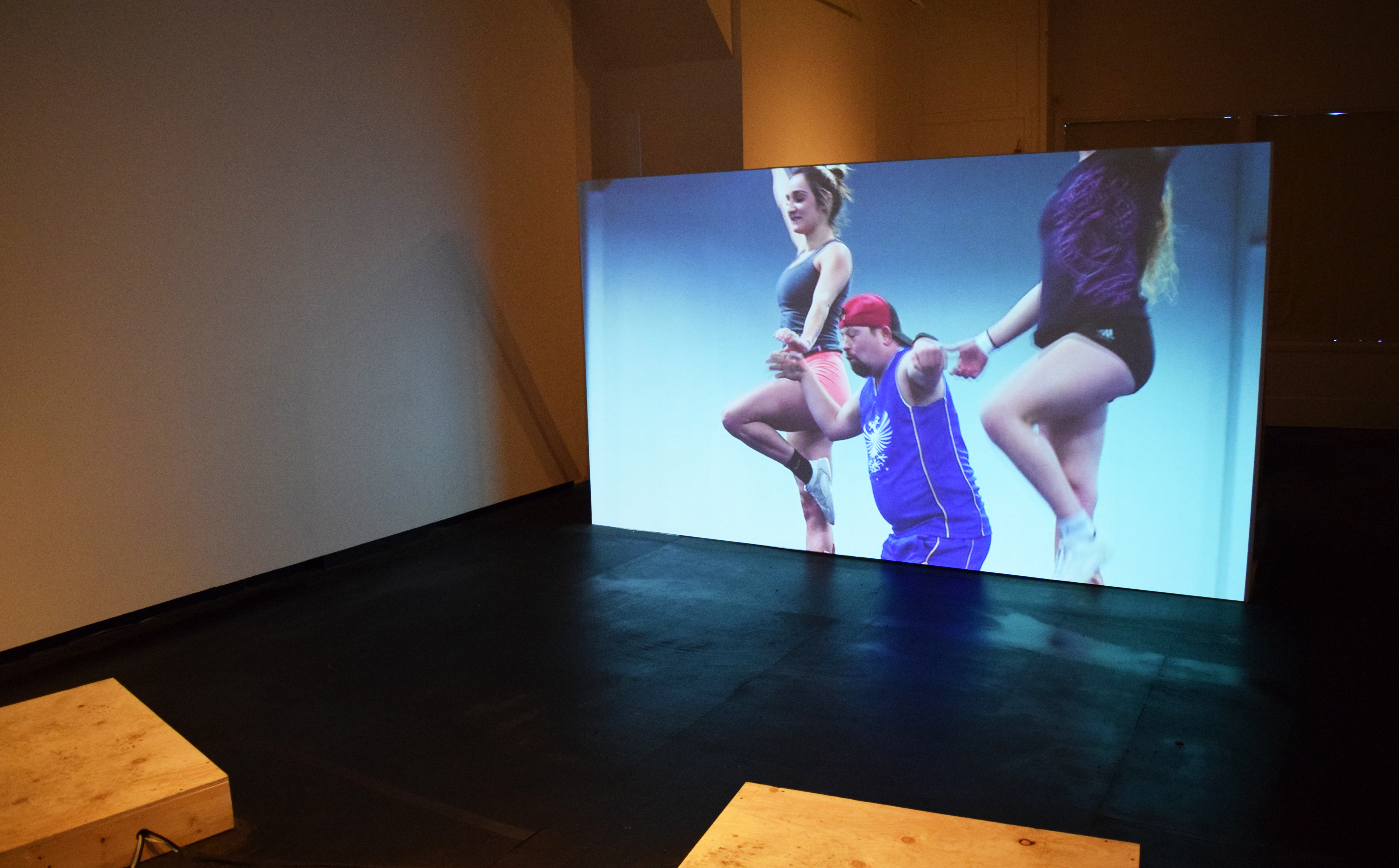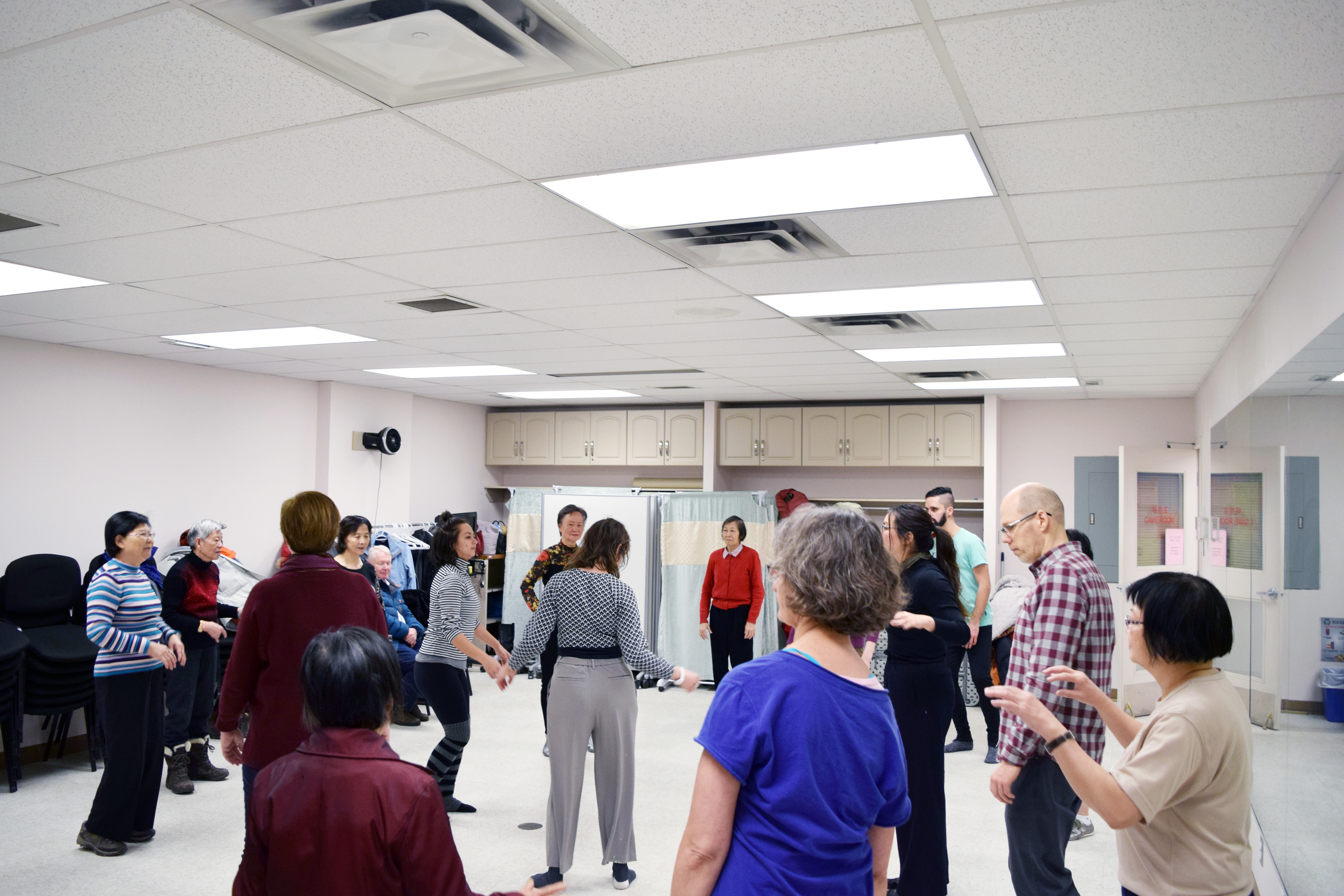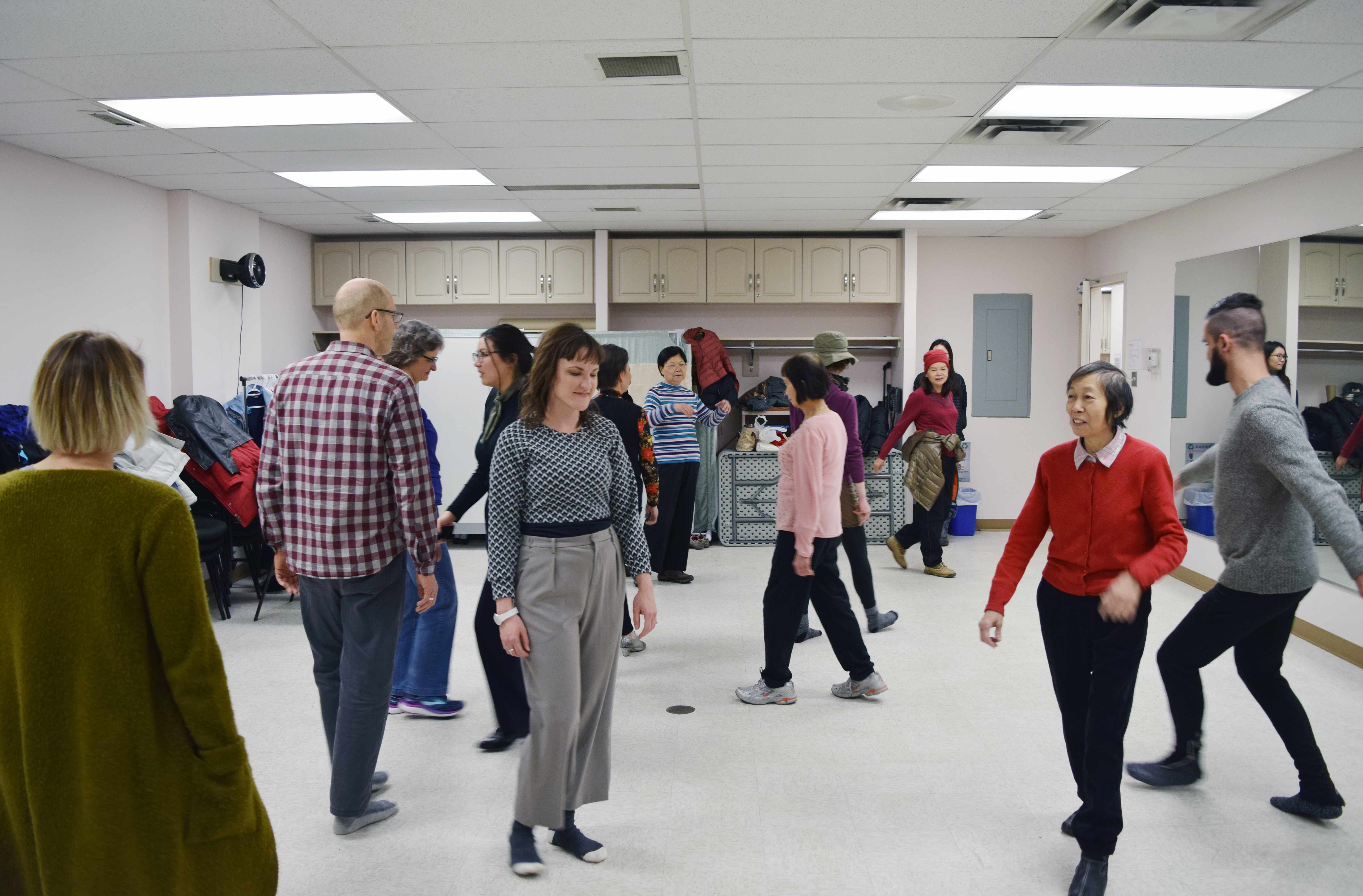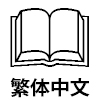MAINSPACE EXHIBITION /

Dup-boug-a-dad
Aislinn Thomas
January 13 – February 10, 2018
Exhibition Description
Dup-boug-a-dad is a video installation that is curious about different ways of being in the world. Its form and content address the body, and some of the many ways of being bodied. In parts intervention, documentary, document and music video, it features David Gunn, a young man who has a physical and an intellectual disability.
David loves cheerleading. Living in rural Nova Scotia, as he does, his main access to the sport is through YouTube. The footage in Dup-boug-a-dad was taken when David practiced with the University of Waterloo varsity and junior varsity cheerleading teams in 2015.
David loves to sing. Being deaf, as he is, he sings in his own language. The song featured in Dup-boug-a-dad is, at least in part, about lifting a cheerleader up with one arm. David sang it while standing on a platform that vibrated in response to the sounds he made, translating his voice into a felt, tactile sensation allowing him to “hear.”
Dup-boug-a-dad takes its name from one of David’s frequent refrains, and when entering the gallery the first thing one encounters is the sound of his voice. David’s singing draws the viewer towards a video projection and two vibrotactile platforms. These simple plywood affordances make it possible for David’s voice to be not only heard, but experienced haptically.
Dup-boug-a-dad is a very physical, sensorially rich experience that gives viewers lots of space to encounter words and sensations that—like other words and sensations—both communicate clearly and not at all. It suggests that this ambiguity is generative; that in spite (or because) of this uncertainty, we continue to sense and make sense of what we see, feel and hear. And that there is value in this.





Dup-boug-a-dad
Dup-boug-a-dad
Dup-boug-a-dad-a-dad
Boug-a-dad
A-dad
Dup-boug-a-dup-boug-a-dad
The rhythmic, staccato sounds that have a breathy urgency and no clear meaning in English anticipate the images in Aislinn Thomas’s video Dup-boug-a-dad. Before clear recognition of image or identification of its source, the sound offers a hearing-feeling-thinking-being way into the space of this artwork that asks for time, an extension of the generosity of the artist and her subject, and an exploration of the curiosity that led the artist to make this work.
The video features David Gunn, a goateed man with an intellectual disability, his name emblazoned in ink on his upper left arm, and a bouncing force of energy. In Dup-boug-a-dad, Gunn is the source of the ambient utterance and a smiling, athletic-gear-clad cheerleading enthusiast whose eagerness to participate inspired Thomas to get the University of Waterloo cheerleading team onside to help him attempt to lift an athlete one-handed during one of their practice sessions.
The video installation, which includes vibrotactile platforms through which viewers can feel Gunn’s vocalizations with their bodies, is a bringing together of forms that might seem out of place in an art gallery but for the clarity and sensitivity with which they have been brought together. In working with Gunn, a man whom she met in a L’Arche community in Cape Breton several years earlier, Thomas takes seriously the contributions of a person whose existence is on the margins of visibility in the art world. Likewise, the athletic pursuit of university cheerleading is one that is seen by many as outside both the artistic and athletic mainstreams, a sport that is considered mostly by those who partake in it and their close compatriots. But Gunn loves cheerleading, and on Thomas’s request, the Waterloo cheerleading team has gone to effort to share with him their skill and athleticism, to include him in their training and make space for his enthusiasm. In doing so, the cheerleaders are called outside of their space of routinized performance, and Gunn is brought, however temporarily, into this particular community of practice.
Gunn, as seen onscreen, clearly loves the camaraderie and achievement of this high-energy recreation, its pace matching his own buzzing elation. In the atmosphere of the busy gymnasium, bodies flexing and flipping, Gunn’s glee is palpable. As we watch the feats of agility and the care with which Gunn is treated within this group, his breathy vocalizations increase in speed and intensity, filling the space of viewing with an awareness of bodily sensation and the coiled tension of muscles and breath at work. The viewer’s body is brought into the room alongside those of the athletes and Gunn, calling attention to physical effort, to their trying and sometimes failing in the larger direction of success. The simultaneity of synchrony and individualized movement, highlighted through video edits, shows in this context a metaphorical microview of human actions in the world, how individual forces combine to common effort.
Thomas’s desire to work with Gunn, to make him a part of this project and not just its subject, foregrounds his agency and demonstrates that caring and curiosity, in whatever unconventional format they may take, make us all better. The seemingly ordinary gesture of being human together really is the greatest of attempts, and the greatest of feats.
—Jessica Wyman
Biographies
Aislinn Thomas is an interdisciplinary artist whose practice includes video, performance, installation, and text-based work. She culls material from everyday experiences and relationships, exploring themes of vulnerability, empathy, possibility and failure. Her work has been exhibited nationally and internationally and is the recipient of several grants and awards including a C.D. Howe Scholarship for Arts and Design, a Social Sciences and Humanities Research Council of Canada Masters Scholarship, and grants from the Ontario Arts Council and the Canada Council for the Arts. She currently lives in Kitchener, Ontario, Canada. You can see more of her work at aislinthomas.ca
Jessica Wyman is a writer, former curator and, since 2003, a professor at OCAD University, teaching in the Faculties of Art, Liberal Arts & Sciences and Graduate Studies. Her writing has been published internationally and across Canada in magazines and exhibition catalogues, and her research areas include art and language, performance theory, historiography, adaptation studies and the politicizing of the language of art practice and theory.
A special thank you to TNG’s volunteers and interns, Brett Bonk, Tanner Christmas, Aaron Fraser, and Anna Semenoff, for their production assistance with this exhibition.
TNG would also like to gratefully acknowledge Chateau Kwong’s support of artist accommodations at their VRBO listing #873983, owned and operated by playwright Dale Lee Kwong. Check out Kwong’s work at Lunchbox Theatre, “Ai Yah! Sweet and Sour Secrets” premiering February 19 and running until March 10, 2018

